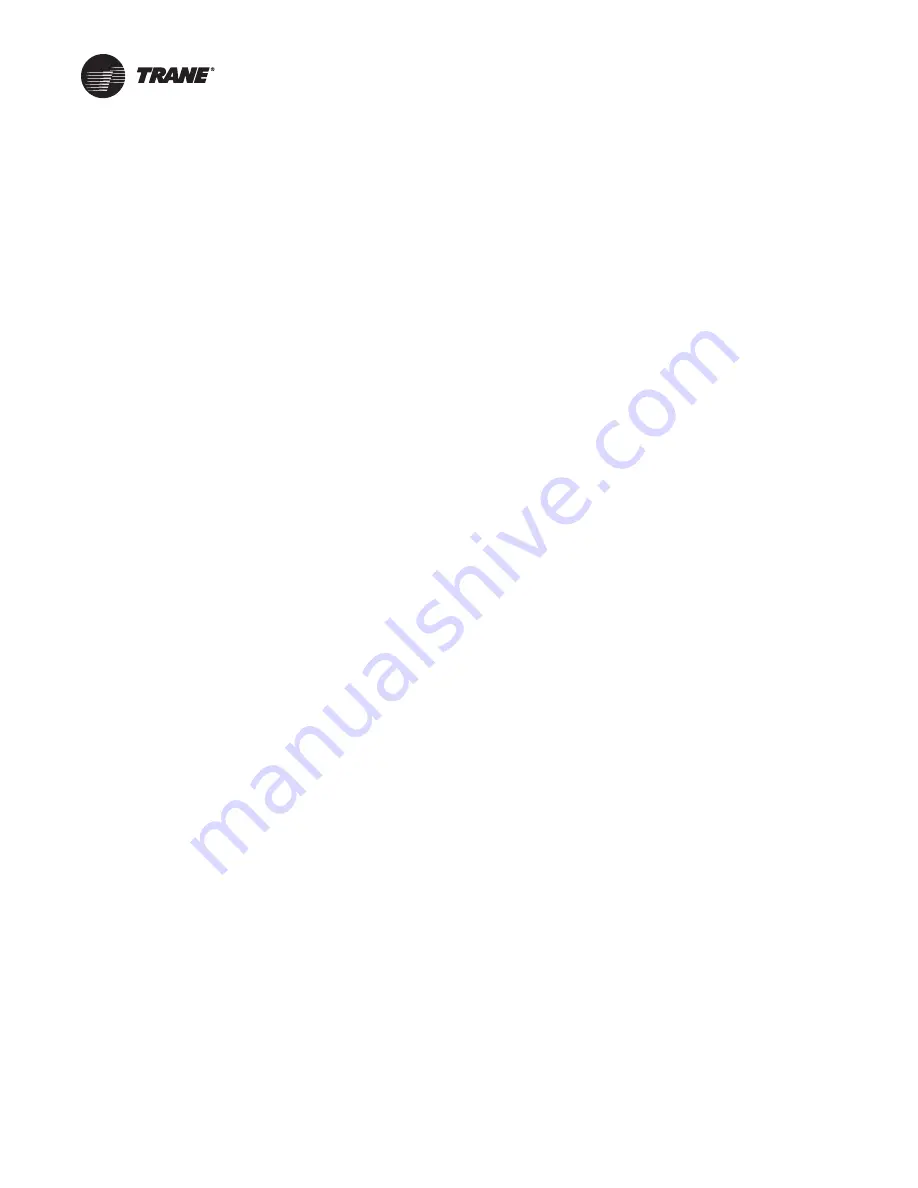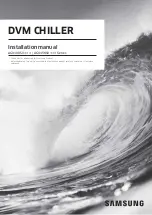
ARTC-SVX002A-EN
13
Installation Mechanical
Inspect and Report Damage
Upon receipt, inventory the shipment against the Trane bill
of lading to ensure all modules and components have
been received.
Inspect each package in the shipment for visible damage.
Verify the correct model number and that all skids and
cartons have been delivered. Any damage must be
reported to the motor carrier and Trane within five days of
receipt of the shipment.
Inspect all exterior components for concealed damage as
soon as possible. Do not proceed with the installation of
damaged equipment without prior approval of Trane.
Do not refuse delivery of damaged goods without prior
authorization. Unauthorized refusal of the shipment will
result in a 20% restocking charge to the customer.
The ownership of the equipment is transferred to the
consignee at point of shipment. Refusal of delivery may
impede recovery of damages.
It is the consignee’s responsibility to accept delivery of
damaged goods unless permission to refuse delivery has
been granted by Trane.
Inspection of Delivered Equipment
To report damage incurred in transit, complete the
following:
1. Inspect each piece of equipment for visible damage
before accepting delivery. Check for torn cartons,
broken skids, bent metal and torn shrink wrap.
2. Ensure the delivery driver notes any damage on the bill
of lading and completes a Carrier Inspection Report.
Failure to comply may result in difficulties in resolving
any claims for damage.
3. Inspect each piece of equipment for concealed damage
before storage or as soon as possible after delivery.
4. In the event of suspected concealed damage, ask the
driver to wait until you inspect the equipment.
Concealed damage must be reported within five days
of receipt of equipment.
5. If concealed damage is found, stop unpacking the
shipment. Do not remove damaged material from the
receiving location, take photos of the damage. The
owner must provide reasonable evidence that the
damage did not occur after delivery.
6. Notify the carrier of the damage as soon as possible.
Request an immediate joint inspection by the carrier
and consignee. A determination of responsibility will
be made and the carrier will authorize repairs in the
event of admission of fault.
7. Notify Trane customer service department
immediately. Trane will coordinate repairs with the
owner and carrier. Do not attempt to make repairs
locally without permission.
Warranty Issues
Trane is not responsible for damages or for filing damage
claims. It is the customer’s responsibility to ensure that the
necessary long term storage procedures have been
completed and any deviations are reported to Trane
immediately.
Long Term Storage Requirements
Appropriate preparation and storage of Trane chiller
components during extended periods of dormancy is
essential to ensure the equipment does not sustain
damage or degradation due to inactivity and operates
properly after installation.
The customer must notify Trane during the sales process
that the chiller system may be transported by ocean freight
or placed in long-term storage under any of these
conditions:
•
The chiller will not be placed into operation for a
period exceeding six months after leaving the Trane
factory. That is, the initial start-up date will not occur
within a six-month maximum dormancy window.
•
The chiller will be shipped using ocean transit for all
or part of the delivery process.
•
Cold temperature storage conditions fall below
-20 °F (-29 °C).
•
Ambient temperature storage conditions exceed
150 °F (66 °C).
Factory Preparation
Upon confirmation of an order requiring long-term
storage or protection against extreme environments,
Trane will inspect and protect vendor-supplied
components before installation.
Prior to shipment, Trane will prepare each chiller system
for long-term storage in coastal or tropical environments
by:
•
Placing silica gel packs in all electrical panels and
variable speed drive panels to prevent corrosion of
electrical contacts and moisture from degrading
sensitive controllers.
•
Shrink-wrapping each chiller using polyethylene
film to limit environmental exposure and protect
the chillers from damage during shipping.
•
For multiple modular chiller system assemblies
shipped on a common skid, shrink wrap the entire
skid rather than the individual modules.
Trane will document and photograph the status of the unit
prior to shipment and carry out the instructions detailed in
the factory order regarding in-shop preparation of units for
long-term storage.














































